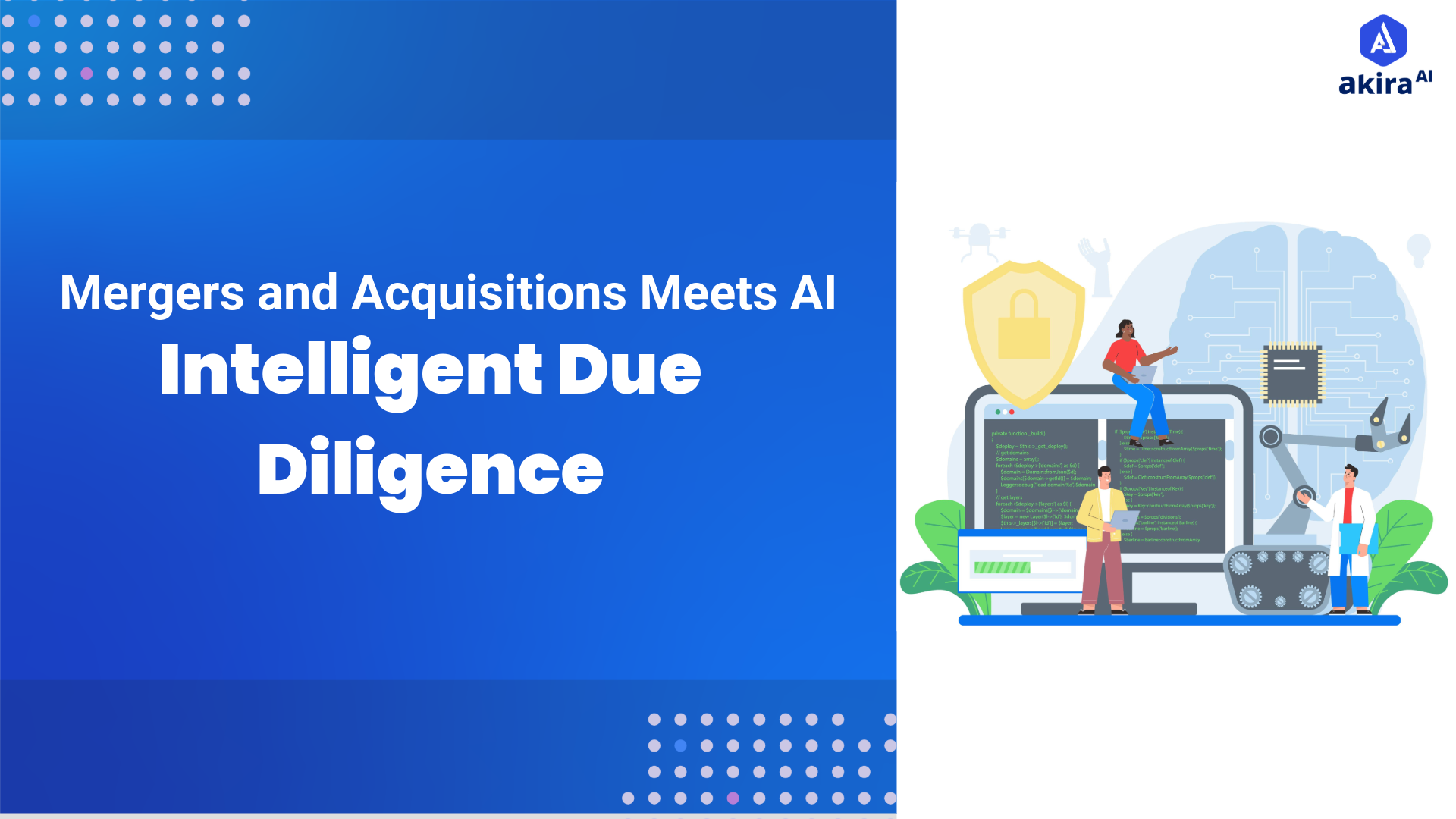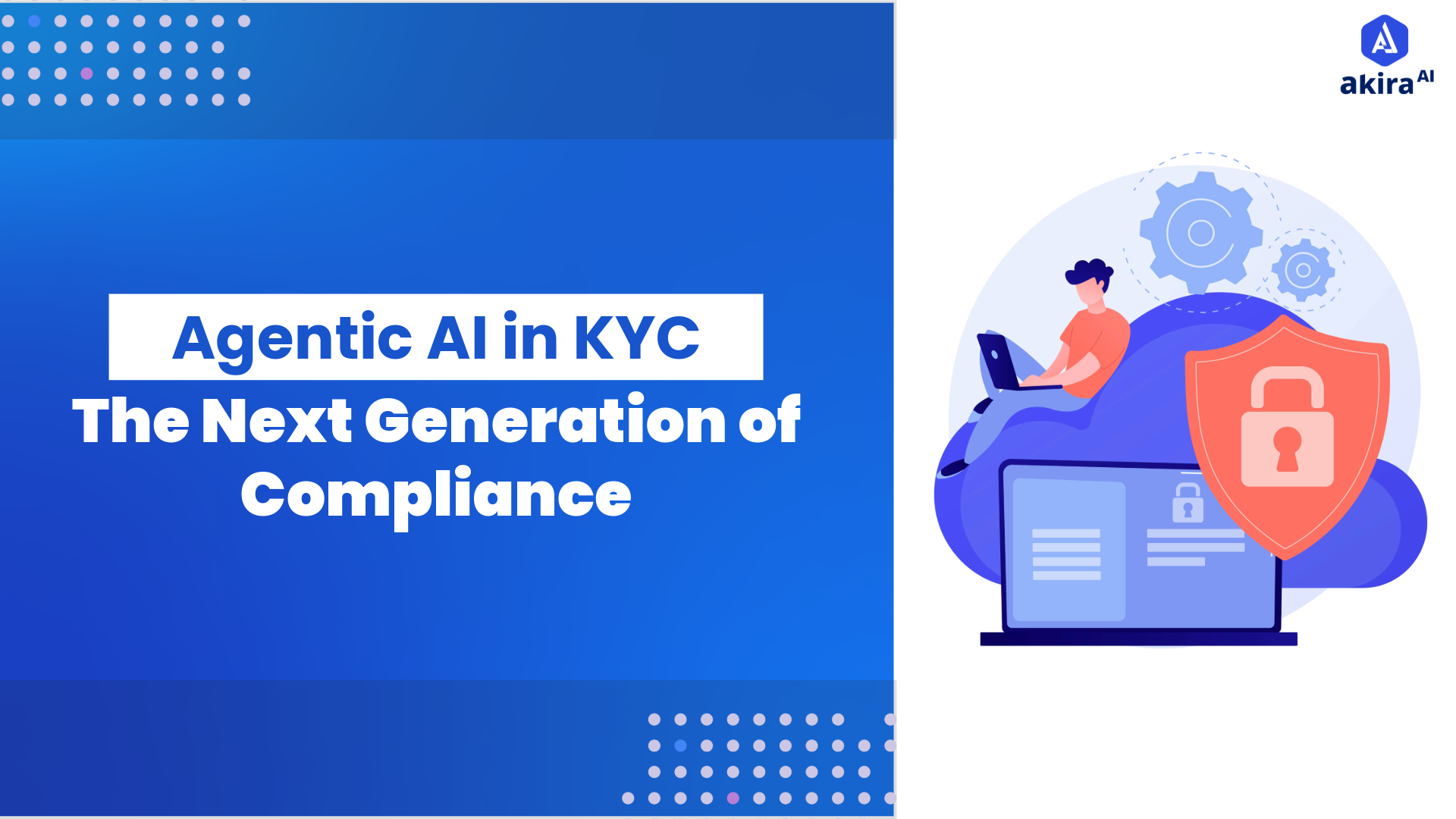Introduction
In today's dynamic financial landscape, organizations must rigorously evaluate the creditworthiness of borrowers to minimize risk, optimize lending strategies, and sustain financial growth. Credit analysis involves a detailed assessment of financial health, debt capacity, and repayment ability, which is essential for making prudent lending decisions. The rise in generative AI is transforming this process, bringing improvements in both efficiency and security. In this blog, we'll explore how a multi-agent system provides a more autonomous and efficient approach to credit analysis, featuring Akira AI's innovative multi-agent system.
What are AI Agents and AI Agents in Credit Analysis?
AI Agents
AI agents are computer programs designed to perform tasks autonomously by making decisions based on their environment, input, and specific objectives. Unlike traditional automation systems that rigidly follow predefined instructions, AI agents can think, adapt, and act independently. They are equipped to assess their surroundings, learn from previous experiences, and make decisions aimed at achieving particular goals.
AI agents range from simple programs that handle single tasks to sophisticated systems that manage complex processes. They thrive in unpredictable environments, leveraging their learning capabilities to navigate the internet, interact with applications, process vast amounts of data, engage in transactions, and continually refine their methods based on feedback.
AI Agents in Credit Analysis
As credit analysis is a critical activity in the financial industry, with the usage of AI agents, are being used to continuously analyze financial data, credit applications, and borrower information in real-time to detect inconsistencies or potential risks.
AI agents, therefore, conduct complex procedures of credit evaluation and analysis of financial statements upon viewing the following process: carrying out end-to-end credit evaluation procedures with a lookout for an optimal workflow. The AI agents further issue run-time alerts against the pattern to be scrutinized by the credit analysts in case of any suspicion or indication of an abnormality that calls for further investigation. That way, the process is executed with less human subjectivity involved, thereby improving accuracy in credit scoring and risk assessment.
Key Challenges Faced in Credit Analysis
Before diving into the solution, let’s look at the typical challenges financial institutions face during credit analysis:
-
1. Incomplete Data: Credit applications are often incomplete; many of the relevant data about the borrower's financial background and credit history are missing, therefore making proper decisions on creditworthiness ineffective.
-
2. Complexity of Financial Products: The rise of derivatives, structured financial products, and complex financial statements makes risk assessment increasingly difficult. Understanding these products and evaluating their associated risks is time-consuming and error-prone.
-
3. Fraud Detection: Document fraud involves cases when borrowers present fake or manipulated financial documents. This requires sophisticated systems that are able to detect potential inconsistencies across all applications and highlight suspicious ones.
-
4. Time Pressures: It is increasingly becoming the norm that lending institutions make quick credit decisions. Indeed, quick reviews may therefore end up leading to misapprehensions, poor risk assessment, and bad credit decisions.
-
5. Bias in Decision Making: Human analysts’ decision always has some bias and would, therefore, offer non-constant and prejudiced judgments. It would not only appear in the credit score itself but also in the standing of the financial institution.
AI agents can address these challenges head-on by automating many of the steps involved in credit analysis. These AI agents aggregate data from several sources and then analyze it, getting a full view of a borrower's financial background despite absent information. Agents also detect document fraud through the recognition of patterns and anomalies in documents, which underlines the right activities. This helps to avoid time pressures with quick processing applications for credit, thereby accelerating decision-making without any compromise on accuracy. They reduce biases in decision-making by resorting to standardized data-driven criteria, which leads to more objective decisions and a reduced level of subjective prejudice in credit evaluations.
-
Akira AI Solution for Credit Analysis
Akira AI’s network credit analysis workflow by automating every aspect of the observability cycle. The system is composed of an agentic workflow with several specialized AI agents, each designed to handle a specific task within the credit analysis process.
.png?width=1921&height=1081&name=image%20(7).png)
-
Process Flow:
-
-
1. Entry Points: The workflow is triggered by various requests such as credit application submissions, financial reviews, credit limit adjustments, or new account openings.
-
2. Master Orchestrator Agent: This AI agent coordinates the entire workflow, analyzing incoming requests, determining required steps, and delegating tasks to specialized agents.
-
3. Data Collection and Validation: An AI agent gathers and validates relevant information for credit analysis, ensuring data accuracy and detecting potential fraud.
-
4. Financial Metrics and Risk Assessment: Specialized agents analyze financial ratios and assess creditworthiness using the "4 Cs of Credit" (Character, Capacity, Capital, Conditions), alongside predictive modeling for risk evaluation.
-
5. Predictive Modeling and Trends: Advanced machine learning models predict default risk and provide forward-looking insights based on historical data and current market trends.
-
-
The Technological Backbone of Akira AI’s Framework
Our composite AI framework utilizes the components from traditional Machine learning to advance Multi-agent systems:
|
Layer |
Component |
Stack |
|
Input Processing |
Customer Onboarding, Large Transaction, Account Opening |
ELK Stack (Elasticsearch, Logstash, Kibana) for data aggregation |
|
Master Orchestrator Agent |
Agentic Process Orchestrator |
Langraph or AutoGen for agent development and orchestration |
|
LLM
|
GPT-4 or other finance-tuned large language model
|
|
|
Knowledge Graph
|
Neo4j or Amazon Neptune
|
|
|
AI Agents
|
Data validation agent |
APIs: REST APIs, GraphQL Data Validation: Cerberus Fraud Detection: Scikit-learn, TensorFlow. |
|
Financial metrics & ratio agent |
Fine-tuned GPT model using financial data and Data Visualization using Matplotlib or Plotly. |
|
|
Predictive model agent |
ML: TensorFlow or PyTorch Time Series Analysis: Prophet Data Processing: Apache Spark. |
|
|
Data Layer |
Data Management |
PostgreSQL for structured data |
|
Qdrant or Pinecone for vector data (embeddings) |
We have used Qdrant vector store for increased security |
|
|
Backend |
API and Service Layer |
FastAPI or Django for building secure and scalable APIs |
|
Frontend |
User Interface |
React or Vue.js for building a responsive interface |
|
Infrastructure |
Deployment and Scaling |
Kubernetes for container orchestration |
The Multi-Agent System in Action
Various triggers initiate our credit analysis workflow:
1. Credit Application Submission: When a customer submits a credit application, this initiates the workflow.
-
2. Financial Review Request: A request for reviewing the financial situation of an individual or business.
-
3. Credit Limit Adjustment Request: When a customer seeks an adjustment to their credit limit, the system starts processing the request.
All these triggers funnel into the Credit Analysis Agentic Workflow, which coordinates the steps in the process through a multi-agent architecture.
AI Agents Involved
1. Master Orchestrator Agent
The central command unit that directs respectively, the overall automation of the credit analysis process. It is responsible for delegating the tasks to other agents so that at every stage in the process each step is free of any errors.
It relies on an LLM for higher-order decision-making. The knowledge graph captures the analysis data, rules, and relationships related to this domain and integrates the results into the Master Orchestrator Agent.
2. Data Collection and Validation Agent
The Data Collection and Validation Agent has the responsibility of collecting all information relevant to a financial and credit nature that is required in the process of analysis. This is done with the use of an LLM attached to an external API and thus connected to sources such as bureaus and financial databases to ensure effective capture of details.
This is an extremely important agent in fraud detection as we have to avoid risky loan approvals, which verify the credibility and accuracy of the data. The agents flag discrepancy or incomplete data which acts as an indication to either the system or the credit analyst whether there is a problem. This ensures that the data is full and reliable since complete and reliable data is needed in order to ensure an accurate credit assessment.
3. Financial Metrics and Ratios Analysis Agent
After data validation, the next agent down the line is the Financial Metrics and Ratios Analysis Agent. It is integrated with a domain LLM that has specialized in the interpretation of financial data complexity for credit analysis. The scale used for financial metrics, ratios, and benchmarks is large.
The agent is able to compute various types of financial ratios, which have a great role in estimating the financial health of the credit applicant. The agent also checks, in this connection, various types of ratios such as liquidity, profitability, and efficiency to find out if the applicant is financially strong to return the loan.
4. Risk Assessment and Scoring Agent
Further, the Risk Assessment and Scoring Agent based on credibility, performs the risk assessment by utilizing a Domain LLM for that purpose. It works systematically along predefined rules in adherence to regulatory requirements, industry best practices, and internal policies with the view to assessing the applicant's risk profile.
A big role of this agent involves appraising the 4 Cs of Credit, including Character, Capacity, Capital, and Collateral. Based on this analysis, an agent originates a credit score that summarises the overview that is representative of the applicant's risk profile.
5. Predictive Modeling and Trends Agent
After the credit scoring is complete, the Predictive Modeling and Trends Agent follows advanced machine learning insights into what future risks and financial trends may look like, using an LLM interacting with specialist ML models for predictive analysis.
6. Final Processing
The agent takes into account the applicant's credit history and market behavior in evaluating future liabilities. The agent forecasts the potential risks associated with default or being financially susceptible based on an analysis of individual and macroeconomic factors.
Once all the agents have completed their respective tasks, the data is consolidated to generate a comprehensive Credit Analysis Report. This report includes
1. Credit Score
2. Risk Assessment
3. Recommendations for credit limits, loan approval, or rejection, and suggested terms of credit.
Comparison of Traditional AI Solutions with Akira AI
|
Feature |
Traditional AI Solutions |
Akira AI Multi-Agent System |
|
Autonomously |
Requires significant human intervention for tasks such as data validation and fraud detection. |
Operates autonomously with minimal human oversight, leveraging multi-agent orchestration. |
|
Efficiency |
Tasks are often processed sequentially, leading to longer processing times. |
Increases efficiency by up to 60%, with agents working in parallel to complete tasks faster. |
|
Bias Reduction |
Potential for bias in decision-making due to human involvement in credit scoring and risk assessment. |
Reduces bias by automating credit scoring and risk assessment, ensuring more consistent and objective outcomes. |
|
Fraud Detection |
Relies heavily on manual checks, which may miss certain fraudulent activities. |
Employs advanced algorithms and pattern recognition for superior fraud detection. |
|
Scalability |
Limited scalability, requiring more resources and human oversight as system complexity increases. |
Highly scalable, capable of handling large volumes of data and complex tasks without a proportional increase in human intervention. |
|
Adaptability |
Limited adaptability, with more rigid, rule-based systems that require updates for new financial products or regulatory changes. |
Flexible and adaptable, with agents that can evolve and improve to meet changing market conditions and compliance requirements. |
Benefits of Akira AI’s solution
Key benefits of our Akira AI multi-agent solution include:
-
1. Increased Efficiency: Akira AI speeds up the process of credit analysis since several agents may work simultaneously, hence completing the task up to 60% quicker than traditional systems.
-
2. Enhanced Fraud Detection: Akira AI further strengthens fraud detection through better algorithms, coupled with AI-driven pattern recognition that can more precisely pinpoint fraudulent documentation and other activities than any amount of manual means might allow.
-
3. Bias Reduction: By automating credit scoring and risk assessments, Akira AI minimizes human biases, ensuring that credit decisions are made more consistently, objectively, and equitably for all applicants.
-
4. Scalability and Flexibility: The multi-agent architecture is very highly scalable in terms of data volume without adding human operational effort. In the event of any change in market conditions, new financial products, or relevant evolving regulatory requirements, scalability will adapt easily.
-
5. Comprehensive Analysis: Akira AI takes input from an array of structured and unstructured sources, furnishing a total view of an applicant's financial profile. That leads to better decision-making because it's more informed and accurate.
Conclusion
The use of multi-agent systems in credit analysis is revolutionizing how financial institutions evaluate creditworthiness. Akira AI’s solution, with its autonomous workflow and advanced predictive capabilities, sets a new standard for credit analysis, offering financial institutions a faster, more reliable, and unbiased method to assess and manage risk. By embracing such AI-driven solutions, organizations can not only improve operational efficiency but also make smarter, more strategic lending decisions.


